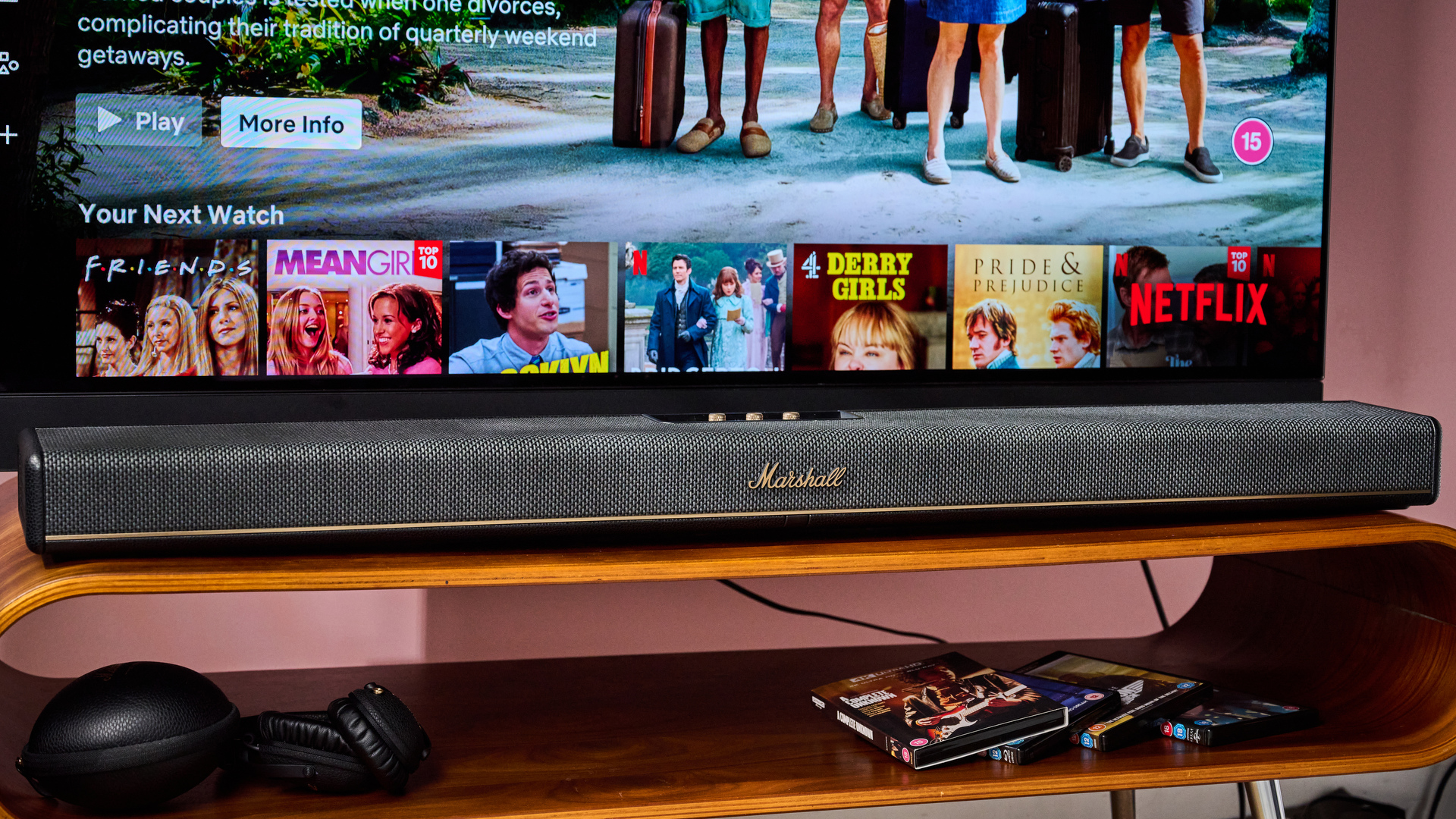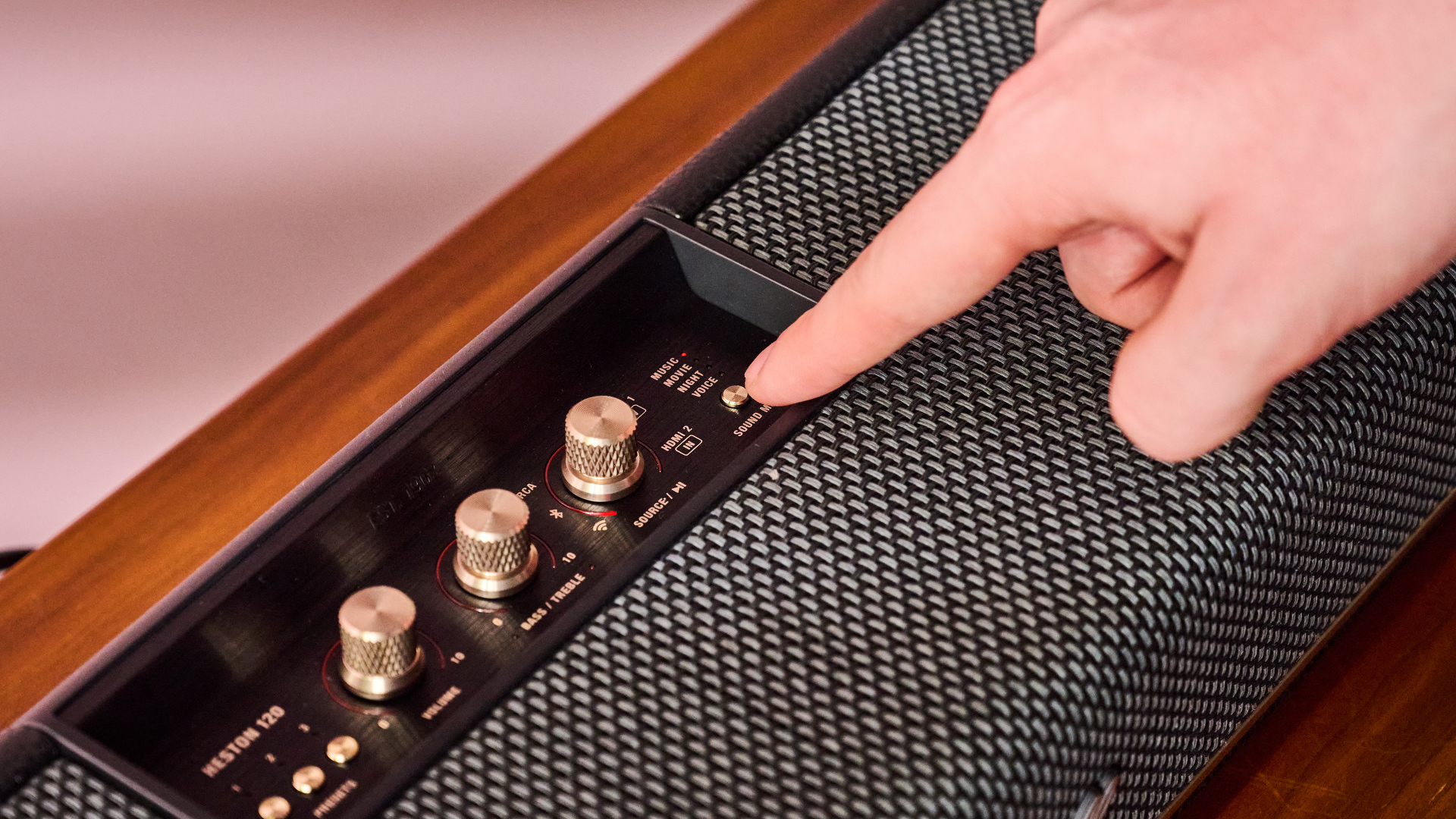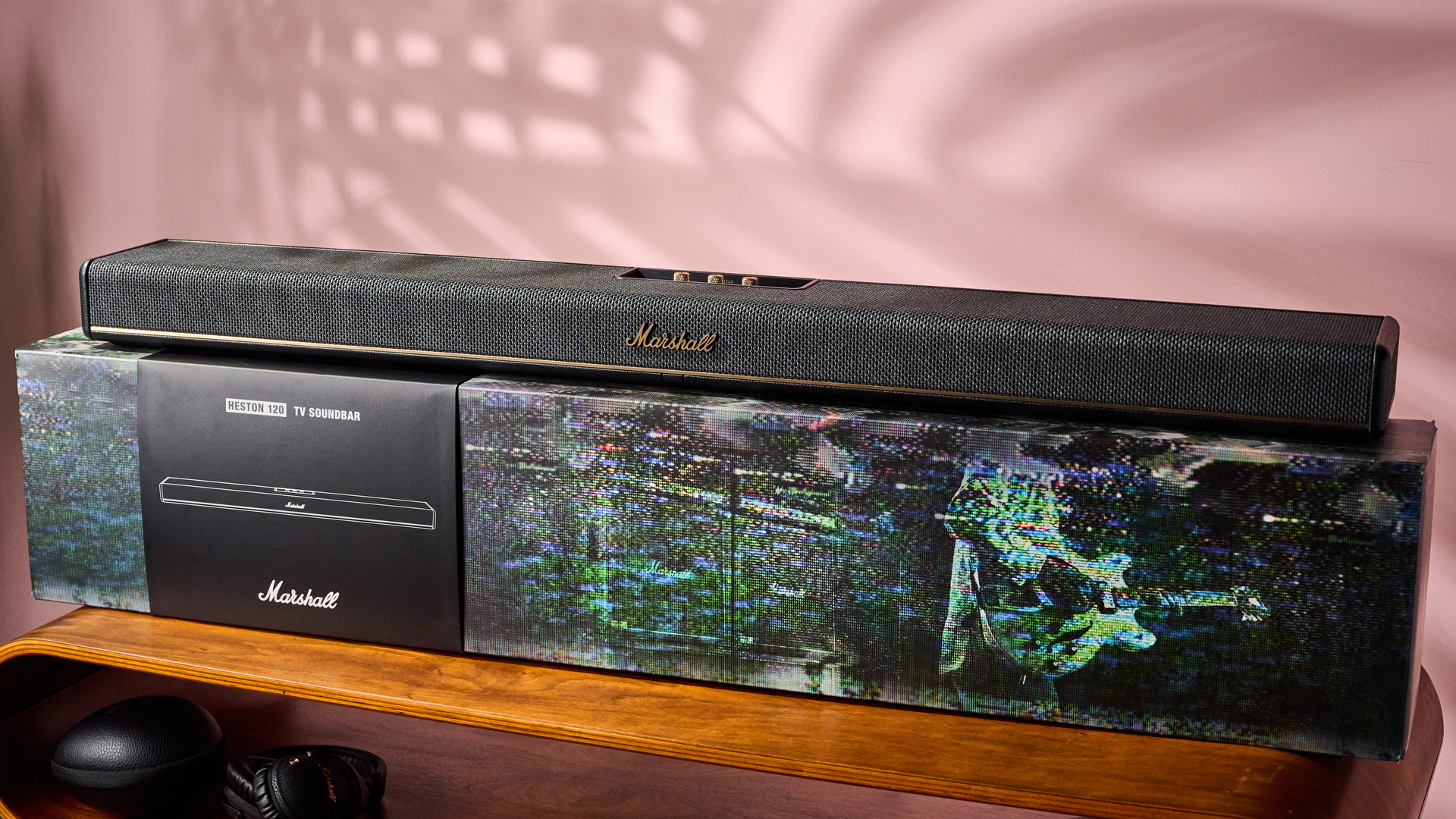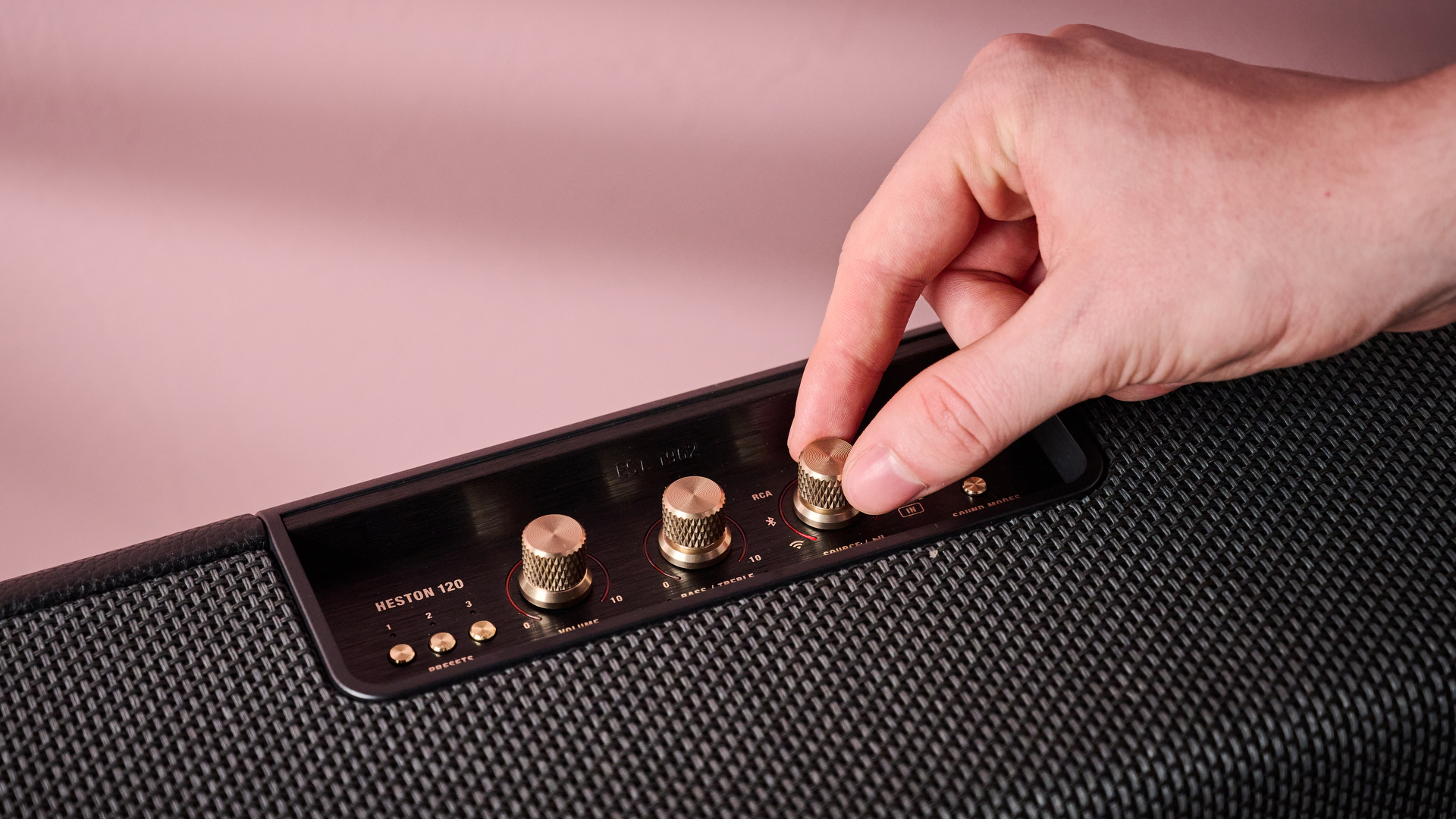3 years, 17 bass drivers, and Jason Momoa on repeat: Marshall’s audio engineers tell us how they made its first-ever soundbar stand out
'I started in November… I lost my mind before Christmas'

Marshall has announced to the world that it is taking its first step into the world of soundbars. With the Heston 120, the audio specialist is aiming to compete with some of the best soundbars around, supplying massive Dolby Atmos sound while still nailing music reproduction.
The all-in-one configuration of Marshall’s soundbar sees it compete directly with the great Sonos Arc Ultra, and at $999 / £899, there’ll be high expectations on the company’s debut effort. So, as you may expect, Marshall’s attempt to forge one of the best Dolby Atmos soundbars has been far from a quick and easy operation.
In fact, the Heston 120 has been years in the making, with countless iterations, benchmarking and design tweaking required to get the audio brand’s effort on the money. In light of that, I sat down with Marshall Group’s Ed Camphor, Audio Technology and Tuning Lead, as well as Anton Svensk, Acoustics Engineer Consultant to uncover the stand-out moments from the Heston 120’s lengthy development.

More and more Momoa
“I think it was November 2021 when I was first doing stuff for it,” says Camphor, who has assisted in tuning a bunch of Marshall’s flagship products, including the Marshall Monitor III ANC headphones.
Camphor recounted the extensive benchmarking required near the beginning of development, stating: “I think it was four different soundbars I had, and I’d play this 20 second clip of Jason Momoa to like 30-50 people. I had to play it five times per person, so I lost my mind before Christmas!”
But over the course of the three years, there would be far more than four comparison bars for Camphor and team to assess the Heston 120 against.
There were “more than 10 [soundbars]”, Svensk revealed to me. The pair also used other speakers when comparison testing, including a bespoke reference model they built with 3D-printed audio waveguides (similar to the horn on a gramophone, or speakers that use compression drivers).
Sign up for breaking news, reviews, opinion, top tech deals, and more.
The soundbar has “changed a lot” from the early days, said Camphor, who told me that there were 17 iterations of the bass drivers alone.
And as I mentioned in my first impressions of the Heston 120, that focus on huge, imposing bass is more than evident. “If you have enough bass that can go loud enough, you can make something reasonably flat, reasonably pleasant”, Camphor noted.
Earth-shaking bass might not be what people associate with Marshall’s deep ties to rock ’n’ roll, but the pair were keen to highlight how recent releases, like the small-sized Middleton and larger Woburn line, have excelled in the low-end.

The art of balance
Getting that bass output just right was crucial for Marshall’s tuning duo, who had feedback early on that the bar had “too much bass” and that it wasn’t “wide enough sounding”. However, striking that balance sonically was key, Camphor told me, not only across the frequencies, but across different formats.
“It's clear that some soundbars sound good with specific types of signal, but then they sound very boring with other types,” he said. “We have tried every type of signal and actually took time to make them all sound good”.
He noted how the tuning team spent a fairly even amount of time nailing audio across three main areas: Dolby Atmos for movies; Dolby Atmos music; and stereo music.
And perhaps unsurprisingly, given Marshall’s heritage, it was that music listening experience that we kept coming back to. This is an area that a lot of soundbars – even competent all-in-one options like the Sony HT-SF150 – struggle in.
But with the Heston 120, Camphor asserted, “it's like playing music out of a speaker as opposed to playing music out of a soundbar”. Is he right? Alas, you’ll have to wait for my full review to find out!

Standing out from the crowd
Stereo music in particular is an area where the audio engineers saw the Heston 120 setting itself apart from competitors. Even fairly early on, the Marshall acoustics team felt that they had something special, Svensk told me. “Everyone agreed that our very early unit sounded better with stereo music than any of the competitors. Then, I was like… okay, we really do have a product here”.
Something that Camphor, Svensk and team spent a while considering was whether to use the center channel for stereo playback. “We were talking more philosophically about how users interact with this thing and where they sit and sort of listen to music," said Camphor. "We considered whether we want a sweet spot or not, that was a big thing."
Marshall also configured the Heston 120’s height channels so that they handle more precise treble sounds in the 8kHz and above, so that the soundbar can pull off controlled, detailed highs.
Aside from music, Marshall has attempted to make the Heston 120 standout with its status as a true, all-in-one hub. The company has integrated a bunch of streaming services such as Spotify and Tidal Connect, there’s no remote control, and there’s also no separate rear speakers or a sub. “When we asked people, they wanted it [a soundbar] to be good enough without the sub," said Svensk. "People are tired of having too many remote controls.”
Marshall has, however, revamped its companion app meaning you can customize sound modes, volume, EQ and more, all with your phone. And even if the audio company insists that this all-in-one bar is all you need, there will still be a dedicated subwoofer, the Heston Sub 200, releasing later in 2025.
You might also like
- I tried Marshall’s first soundbar, which rivals the Sonos Arc Ultra with an amp-inspired design and huge Dolby Atmos sound
- Want a new soundbar but don’t want to break the bank? Don’t worry, we’ve got you covered with our guide to the best cheap soundbars

Harry is a Reviews Staff Writer for TechRadar. He reviews everything from party speakers to wall chargers and has a particular interest in the worlds of audio and gaming. Harry has a background in business tech journalism, particularly around the telecoms industry.
You must confirm your public display name before commenting
Please logout and then login again, you will then be prompted to enter your display name.